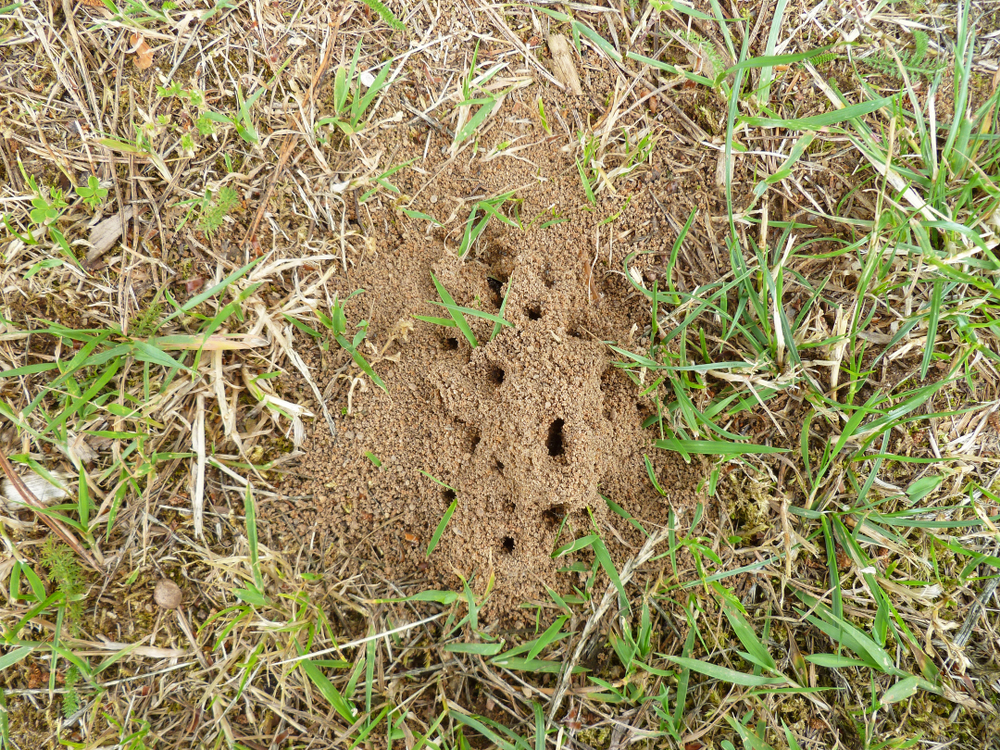
Ants. Ants are one of those creatures that you hate having hanging around your yard (especially when you’re having a picnic), but you’re torn about because, in addition to being a pain, they also serve some very important roles for the ecosystem.
Here’s some of the good, the bad and the ugly when it comes to ants.
The Good
- Ants contribute to and support a healthy ecosystem. Ants dig tunnels, aerating the soil; the tunnels carry water, oxygen and minerals to the roots of plants.
- Ants “help speed the decomposition of organic material, such as leaves and dead insects, thereby fertilizing plants.” (Source: Tower Garden)
- Ants also help enrich the soil through aiding with the decomposition process of organic matter.
- Ants help control other pest populations “by eating their eggs and young or disturbing them during feeding”. (Source: Tower Garden)
- Ants help improve pollination rates in their travels.
The Bad
- While ants will help control some types of pests, they actually will increase other pest populations. “Ants farm aphids — protecting these bad bugs from predators so they can “milk” honeydew from them.” (Source: Tower Garden) Honeydew is naturally produced by aphids, whiteflies, scale, mealybugs and other sap sucking pests and is a sticky liquid secretion.
- Ants can wreak havoc on your lawn and trees if they decide to take up residence on your property.
The Ugly
- If you have a lot of ants outside your property, there is the potential for them to make their way into your home.
Signs you have ants

- This is pretty obvious, but seeing ants is a sure sign you have ants (duh!).
- Small or large mounds of dirt or anthills.
- Ants feeding on food that you left outside.
- Finding ants living inside dead branches on trees.
- Ants crawling up and down branches of trees.
- Ants in your gutters. Ants can enter gutters by climbing or being carried in by leaves.
Types of ants found in Alberta
There are over 100 species of ants in Canada.
The most common ant found in Calgary is the odorous house ant which thrives both indoors and outdoors.
Can ants damage your lawn or trees?
- Ants can disturb the roots of trees and perennials, negatively impacting their health.
- Ants can kill lawns in spots where they dig up large piles.
- If you have aphids on your trees and shrubs, ants will help protect them, as they feed on their honeydew, resulting in increased aphid populations.
This photo is of an ant and 4 aphids sitting on a blade of grass
Tips to prevent ants from taking over your yard
- Remove access to food and water.
- Keep your yard tidy, clean and weed free so that ant mounds are easier to notice.
- Get rid of aphids and other sap-sucking pests which produce honeydew which ants feed on.
- If you notice anthills on your property, take steps to try and control or eliminate them.
- If you have an ant infestation on your property, trim trees, shrubs and bushes that touch your home’s exterior (ie siding, roof, etc) in order to prevent ants from using these plants as a bridge to the exterior and interior of your home.
- Do not stack wood next to your home as a stack of firewood is a perfect hiding spot for ants.
- Be sure to keep your lawn healthy (no bare spots and no thatch) as ants tend to colonize on your lawn in bare spots and thatch.
Do-it-yourself tips and options to treat your lawn and yard for ants without chemicals
Before resorting to pesticides to control ants, you may want to try an eco-friendly, non-toxic approach first. There are a number of handy and cost-effective natural home remedies that you can try, using products that you have on hand.

Natural remedies include:
1. Drown ants with your garden hose.
Caution: If you use this method, be aware that the amount of water needed may drown plants and create soggy spots in your lawn.
2. Pour boiling water on anthills.
Caution: If you use this method, unfortunately, the boiling water can kill your grass plus create wet spots in your yard. This method is be used if the ant nest is located in a bare patch or in the middle of a paved area.
3. Pour soapy water on anthills and spray the mixture on ant trails.
4. Pour a vinegar and water mixture on the anthill.
Caution: if you use this use it carefully as vinegar can harm plants (including grass) and will dry out soil.
5. Diatomaceous earth (DE)
“Place food-grade diatomaceous earth by trails and nests. Made from fossilized hard-shelled algae called diatoms, this fine powder dehydrates ants — as well as slugs and cockroaches. But it’s completely safe for humans. (Note: It may take a few weeks to kill ants, and it must stay dry to be effective.)” (Source: Tower Garden)
6. Sprinkle baking soda or baby powder around and inside ant hills and along trails.
Caution: if you use this use it carefully as baking soda can dry out your soil and grass, so we don’t recommend spreading it in the lawn or garden.
7. Distribute artificial sweeteners near ants.
8. Sprinkle ground cinnamon or cayenne pepper around plants.
To learn more about each of the above methods and a few other options, check out this article from Lawn Love, How to Get Rid of Ants in Your Yard and Home.
If these natural options don’t work, Earth Smart Property Solutions offers insect control services. Learn more here.
Sources:
Lawn Love, How to Get Rid of Ants in Your Yard and Home
Tower Garden, Got Ants in Your Plants? Here’s What You Need to Know.
City of Calgary, Ants



One Comment